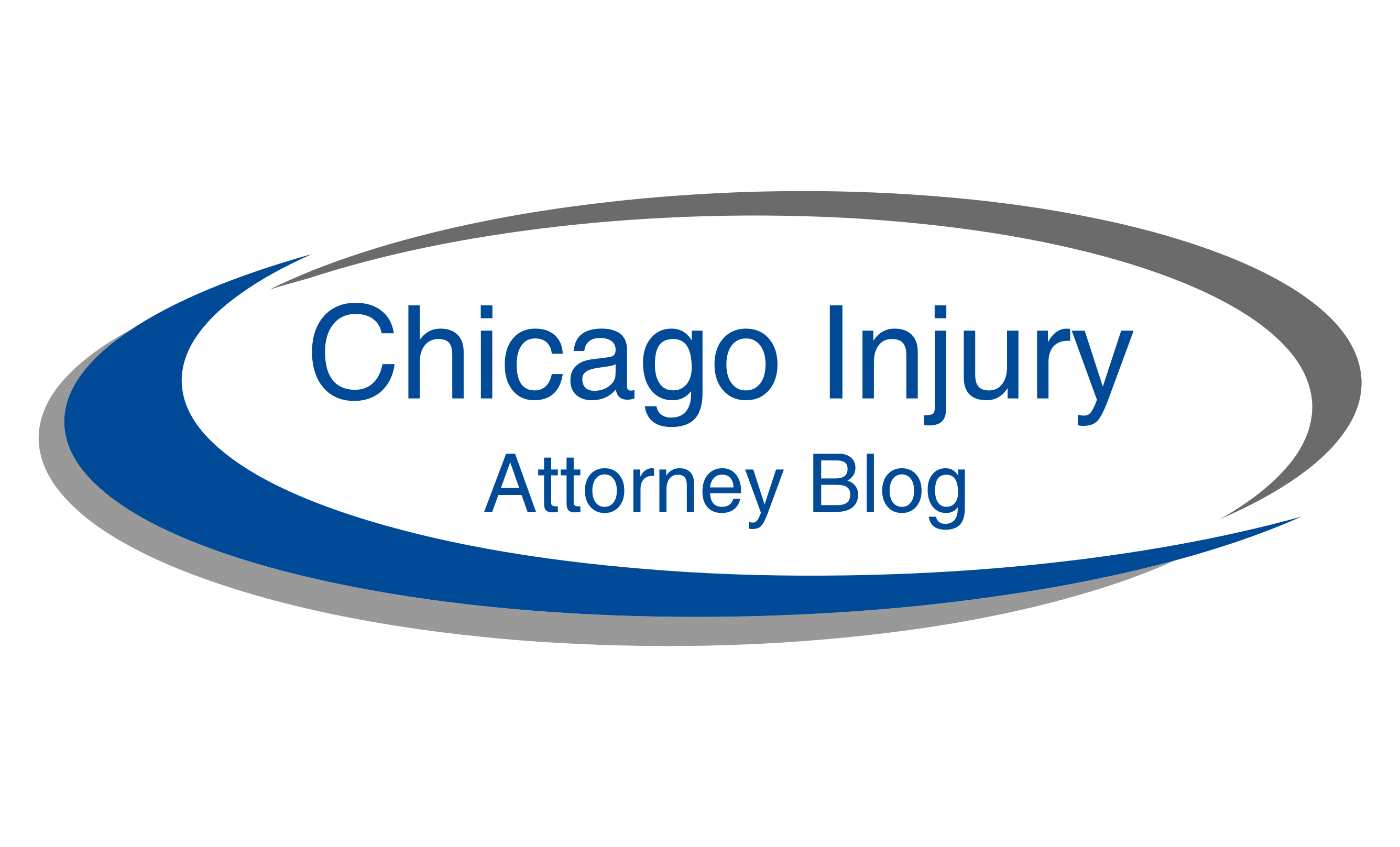Settlement Demand Letter negotiations serve as a crucial step in the personal injury claims process, offering a structured and persuasive approach to securing the compensation you deserve.
A critical step in this process is the preparation of a settlement demand letter. This letter functions as a formal request for compensation and establishes the foundation for subsequent negotiations.
This discussion will delve into the significance of a settlement demand letter, the essential details to include, and strategies for composing a persuasive document. For individuals in Chicago, Rockford, Champaign, or nearby areas, understanding this process can substantially influence the outcome of their case.
Why Is a Settlement Demand Letter Important?
A settlement demand letter is an essential document in the personal injury claim process, serving as a formal notification to the insurance company regarding the compensation sought for damages sustained as a result of an accident. This letter details the specifics of the claim, including the particulars of the accident, an explanation of liability, and the extent of the injuries sustained.
It plays a critical role in negotiating settlement offers and may help in avoiding protracted legal proceedings. More than a simple request, this letter lays the foundation for case resolution and facilitates effective negotiation strategies between the claimant and the insurance adjuster.
1. Provides Evidence of Your Claim
A meticulously prepared settlement demand letter is an essential piece of documentation that substantiates a personal injury case by summarizing the pertinent details of the accident and medical evidence.
By carefully presenting facts such as the time, location, and circumstances of the incident, alongside comprehensive medical reports that detail the injuries sustained and the subsequent treatment, the strength of the claim can be significantly enhanced. This thorough account not only highlights the severity of the injuries but also illustrates the financial impact on the victim’s life. Including eyewitness testimonies and photographs can further enhance credibility, creating a more persuasive narrative.
Given that the legal framework surrounding personal injury cases often necessitates substantial evidence for claims, this organized documentation plays a pivotal role in the submission process, potentially leading to a more favorable settlement outcome.
2. Demonstrates Your Willingness to Negotiate
A settlement demand letter serves not only to articulate your compensation request but also to convey to the insurance company your willingness to engage in negotiations regarding settlement terms.
This approach establishes a tone of collaboration and openness, which is vital for achieving a favorable outcome. By emphasizing a readiness to discuss various aspects of the settlement, you can foster an environment where both parties feel acknowledged and understood.
While it is crucial to communicate your position and expectations clearly, demonstrating an awareness of the insurance company’s perspective can help bridge gaps and promote constructive dialogue. By balancing assertiveness with a cooperative demeanor, you facilitate effective negotiations that honor your interests while accommodating the adjustment process on the other side.
3. Helps Avoid Litigation
Clearly outlining claims and expectations in a settlement demand letter can significantly reduce the risk of legal action, as it often leads to successful settlement negotiations.
This proactive approach not only streamlines the personal injury claims process but also conserves valuable time and resources for both parties. By utilizing a well-crafted letter, the recipient gains a comprehensive understanding of the issues at hand, including the damages incurred and the compensation being sought.
Effective communication helps to avert common legal pitfalls, such as misunderstandings regarding liability or the extent of injuries, thereby facilitating the reaching of an agreement. When both parties are informed and engaged, it fosters a collaborative environment that encourages settlement, ultimately preventing the need for costly litigation and additional emotional distress.
What Should Be Included in a Settlement Demand Letter?
When drafting a settlement demand letter, it is imperative to incorporate a comprehensive array of elements that effectively represent the specifics of your case. This includes detailed information regarding the accident, a summary of medical expenses, and a clear delineation of your damages claim, which should encompass lost wages as well as pain and suffering.
1. Details of the Accident and Injuries
Including comprehensive accident details and a thorough description of the injuries in a settlement demand letter is essential for establishing a strong foundation for a personal injury claim.
To effectively convey the full impact of the incident, it is important to narrate not only the events leading up to the accident but also the sequence of events as they unfolded. One should describe the circumstances surrounding the collision, including the location, time of day, weather conditions, and any relevant traffic signals or signs. Providing a detailed account enhances the credibility of the claim and allows the reader to visualize the scenario.
Furthermore, detailing the specific injuries sustained—such as fractures, soft tissue damage, or emotional trauma—will substantiate the impact on the injured party’s daily life. This comprehensive approach ensures that the severity of the situation is clearly communicated, thereby facilitating a better understanding among all parties involved regarding the extent of the injured individual’s suffering.
2. Medical Expenses and Treatment
Documenting medical expenses and treatment is essential in the settlement demand letter, as it provides critical evidence of the economic damages incurred as a result of the accident.
Meticulously itemizing each expense, from hospital visits to prescriptions, offers a comprehensive view of the financial impact and strengthens the overall claim. It is crucial to detail both the treatments received and any anticipated future medical needs, as these factors can significantly influence compensation outcomes.
By presenting thorough medical evidence, individuals can effectively substantiate their claims, ensuring that all economic injuries are properly accounted for. This level of documentation not only facilitates negotiations but also addresses potential concerns from insurers regarding the legitimacy of the costs involved.
3. Lost Wages and Future Earnings
The settlement demand letter must clearly articulate the lost wages and potential future earnings resulting from the injuries sustained, thereby enhancing the economic damages claim.
Accurate calculation of lost wages requires meticulous documentation of the hours missed from work due to the injury, as well as any overtime or bonuses affected. It is imperative to collect pay stubs, tax returns, and any other pertinent records to substantiate the claim.
Projecting future earnings lost necessitates a careful assessment of potential promotions, salary increases, or opportunities for career advancement that may have been adversely affected by the injury. Comprehensive documentation not only fortifies the case but also serves as critical evidence during negotiations, thereby ensuring that the overall compensation request is both equitable and substantiated.
4. Pain and Suffering
Articulating the impact of pain and suffering in a settlement demand letter is essential, as it addresses noneconomic damages and the emotional distress resulting from the injury.
Effectively conveying these feelings can significantly influence how a claim is perceived by the insurance adjuster or legal representatives involved. For example, sharing genuine anecdotes or detailed illustrations of everyday tasks that have become increasingly challenging can evoke a sense of empathy. Discussing experiences of insomnia, anxiety, or the diminished enjoyment of previously cherished activities can provide a clearer understanding of the ongoing struggle.
Furthermore, expressing how such emotional turmoil has affected relationships with family or friends can highlight the profound ramifications of the injury, thereby strengthening the case for noneconomic damages.
5. Other Damages
The demand letter should include a comprehensive overview of any additional damages incurred, such as property damage, as well as unique case factors that may influence the overall claim value.
This may encompass aspects such as emotional distress, loss of consortium, or diminished quality of life, depending on the specifics of the incident. Detailing any effects on future earning capacity or unexpected costs arising from the accident will reinforce the overall argument.
It is also essential to consider out-of-pocket expenses related to the incident, including repairs and psychological counseling.
By thoroughly addressing these elements, individuals can present a more complete narrative that highlights the full extent of their suffering and losses, thereby enhancing the potential for a favorable settlement outcome.
How to Write a Strong Settlement Demand Letter
Crafting a compelling settlement demand letter necessitates adherence to specific guidelines that enhance its effectiveness. This includes maintaining a clear structure for the letter, providing thorough documentation, and often benefiting from the insights of legal counsel.
1. Use a Professional Tone
Utilizing a professional tone in a settlement demand letter is crucial, as it conveys seriousness and facilitates polite communication with the insurance company.
This approach not only increases the likelihood of a favorable outcome but also helps establish a positive rapport with representatives who may influence the decision-making process. Upholding a level of professionalism reflects respect for all parties involved, ensuring that the content is regarded with the seriousness it deserves.
Employing precise and courteous language encourages an environment conducive to constructive dialogue, ultimately leading to more effective negotiations. This thoughtful strategy highlights the importance of client representation, demonstrating that even in challenging discussions, conflicts can be navigated with dignity and respect, thereby paving the way for resolutions that protect the interests of all stakeholders involved.
2. Provide Supporting Evidence
Providing supporting evidence in a settlement demand letter is essential, as it substantiates claims and strengthens one’s position during negotiations.
This includes the inclusion of detailed medical records that outline the treatments received and expenses incurred, thereby highlighting the direct impact of the injury. Additionally, incorporating police reports can provide an official account of the incident, establishing accountability and potentially attributing fault. Witness statements can further reinforce claims by confirming the circumstances surrounding the event.
Furthermore, photographs or video evidence capturing the scene can effectively illustrate the severity of the injury and the incident itself. Collectively, these forms of evidence are critical in accurately representing the situation, ultimately contributing to a more favorable settlement outcome.
3. Be Specific and Detailed
Providing specificity and detail in a settlement demand letter is essential for effectively communicating claims and enhancing credibility throughout the claims process.
When individuals include precise information regarding their damages and injuries, they create a clearer representation for insurers, which can significantly influence the outcome of their claims. Vague descriptions may result in misunderstandings or reduced compensation offers, whereas comprehensive accounts serve to illustrate the gravity of the situation.
This clarity not only strengthens the overall narrative but also reflects the diligence invested in the claim, indicating that claimants are serious and well-prepared. Ultimately, this approach reinforces their position and aids in negotiating a more favorable settlement.
4. State a Clear Demand Amount
Clearly stating a demand amount in a settlement demand letter is essential, as it establishes the foundation for the compensation request and guides the negotiation process.
By presenting a well-researched figure, individuals can effectively communicate their expectations and the rationale behind their request. This process requires a thorough review of all relevant factors, including medical expenses, lost wages, and emotional distress, to provide a comprehensive overview of the situation.
Maintaining a realistic demand not only enhances credibility but also improves negotiation strategies, facilitating a productive dialogue that can lead to a satisfactory resolution. It is imperative to remain confident while also being open to adjustments, ensuring that the initial claim accurately reflects its true value while allowing for further discussion.
5. Set a Deadline for Response
Setting a deadline for response in your settlement demand letter is a strategic approach that encourages timely negotiations and compels the insurance company to give serious consideration to your offer.
This specified timeline not only underscores the urgency of the matter but also enhances your position during the negotiation process. When the recipient acknowledges the significance of adhering to the deadline, their response is frequently more thoughtful and prompt, indicating a serious evaluation of the proposal.
Establishing a clear timeframe can also reduce delays, reinforcing the notion that complacency may result in missed opportunities. This tactic substantially influences how adjusters respond, fostering a more dynamic environment for discussions and potentially leading to a more favorable outcome for those seeking their rightful compensation.
Tips for Negotiating a Settlement
Effectively negotiating a settlement necessitates a carefully constructed negotiation strategy, clearly defined settlement expectations, and frequently the assistance of a qualified attorney who possesses a thorough understanding of the complexities associated with personal injury cases.
1. Be Prepared and Informed
Being prepared and informed is essential when entering settlement negotiations, as it enables you to articulate your position with confidence and effectively apply negotiation tactics.
This preparation entails conducting thorough research on your claim and familiarizing yourself with the relevant legal principles that may affect the outcome.
A comprehensive understanding of the applicable laws and precedents allows you to anticipate counterarguments and respond with authority, thereby enhancing your credibility. By meticulously gathering all necessary information and documentation, you not only fortify your case but also establish a robust foundation for discussions.
This level of preparation can significantly influence the negotiations, leading to more favorable outcomes and potentially averting protracted litigation.
2. Listen to the Other Party
Listening to the other party during negotiations is an essential skill that significantly enhances negotiation strategy and improves client representation in discussions.
By actively engaging in the conversation and genuinely considering their perspectives, negotiators can uncover valuable insights into the other party’s motivations and concerns. This deeper understanding not only aids in building rapport but also informs tactical decisions, enabling negotiators to adjust their approach effectively.
When individuals demonstrate attentiveness and respect for the other party’s position, it facilitates constructive dialogue, fostering an environment in which collaborative solutions can emerge. Ultimately, this leads to more favorable outcomes for all parties involved.
3. Remain Professional and Respectful
Maintaining professionalism and respectful communication during negotiations is essential for fostering a constructive dialogue and achieving a favorable settlement outcome.
By actively listening and responding with empathy, negotiators can cultivate an environment that promotes collaboration instead of confrontation. This approach not only addresses misunderstandings but also encourages all parties to share their perspectives openly.
When emotions escalate, focusing on mutual interests can redirect the conversation from individual positions to shared goals. The ability to remain calm and composed, even in challenging discussions, is a significant asset; it enhances credibility and can lead to more favorable negotiation results.
Ultimately, a professional demeanor inspires trust, which is crucial for establishing long-term partnerships and achieving successful outcomes.
4. Consider Hiring an Attorney
Considering the engagement of an attorney for settlement negotiations can significantly bolster your position by providing expert insight and professional guidance throughout the process.
One of the primary advantages of seeking legal representation is their capacity to navigate complex legal landscapes, thereby ensuring that all elements of your case are comprehensively addressed. When evaluating potential personal injury attorneys, it is crucial to assess their experience with cases similar to yours, as well as their track record of achieving favorable outcomes.
A skilled attorney is well-versed in the intricacies involved in negotiations with insurance companies, employing effective strategies to advocate for a fair settlement that accurately reflects the extent of your injuries.
Their expertise not only strengthens your case but also allows you to concentrate on your recovery while they manage the legal complexities on your behalf.
Frequently Asked Questions
1. How do I start writing a settlement demand letter as a personal injury victim in Chicago?
To start writing a settlement demand letter, you should first gather all necessary information such as medical records, bills, and any other evidence related to your personal injury case. Then, clearly state the facts of the incident, including the date, time, and location. Finally, make a specific demand for compensation.
2. Is it necessary to hire a Chicago Attorney to write a settlement demand letter?
While it is not required to hire an attorney, it is highly recommended. A Chicago Attorney will have experience in writing effective demand letters and negotiating with insurance companies to ensure you receive fair compensation for your personal injury case.
3. Can I include emotional distress in my settlement demand letter?
Yes, you can include emotional distress in your settlement demand letter. Personal injury cases not only cover physical injuries, but also the emotional toll it takes on the victim. Make sure to provide evidence, such as therapy bills or witness statements, to support your claim for emotional distress.
4. How long should my settlement demand letter be?
Your settlement demand letter should be concise and to the point. It should not be more than a few pages long. Make sure to include all necessary information and evidence to support your claim for compensation.
5. Can I negotiate the amount of compensation in my settlement demand letter?
Yes, you can negotiate the amount of compensation in your settlement demand letter. It is common for insurance companies to offer a lower amount initially, but through negotiation, you may be able to reach a fair settlement.
6. Are there any specific laws or regulations I should be aware of when writing a settlement demand letter in Illinois?
Yes, it is important to be aware of the statute of limitations for personal injury cases in Illinois, which is typically two years from the date of the incident. It is also important to understand the comparative fault law, which means the amount of compensation you receive may be reduced if you are found to be partially at fault for the incident.





